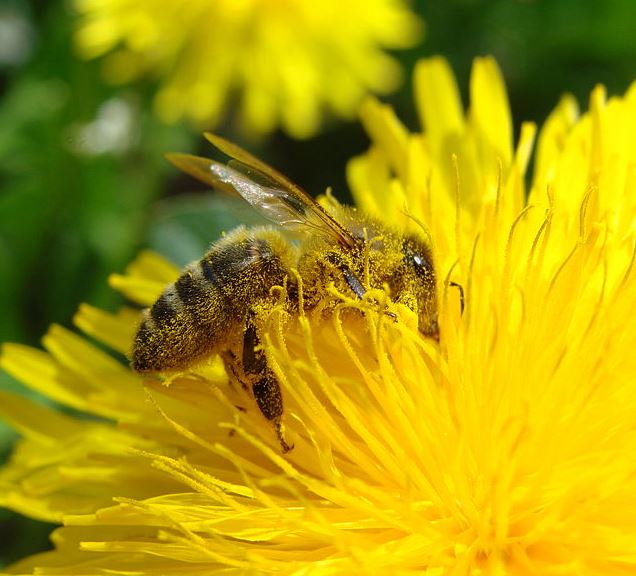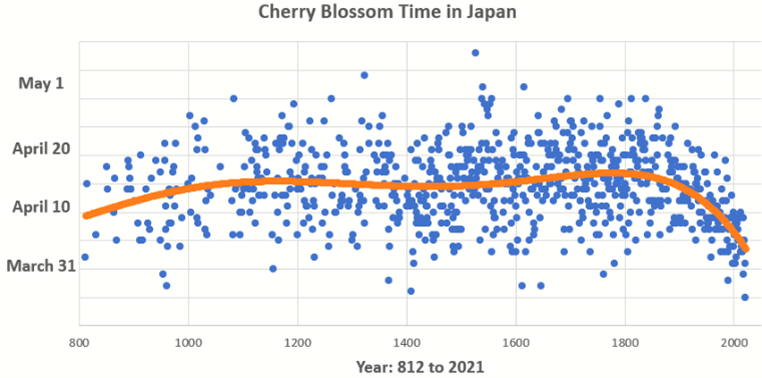When will spring start?
I’m in western Canada, near the Rockies. We have long, cold winters. Spring comes late. So, I’ve always kept honey bee hives wrapped late into the spring. That used to be a real chore 20 years ago when hives were packaged in scratchy pink insulation shrouded in black building paper. Eventually, a beekeeper grows tired of all the fuss and puts away the material by about May first.

These days, with polystyrene hive bodies and/or easily installed winter jackets, it’s much simpler to remove wraps, work hives, then redress the colonies. Since this process takes just a few minutes, we can keep hives wrapped a lot later. How much later?
I recall friends in northern Saskatchewan who forgot one of their forty yards until early July, when the farmer/landlord called to ask if they planned on unwrapping their bees. That yard was in excellent shape, with beards covering all the winter wraps. I was told it was their best yard that year. Maybe it was a combination of luck, lack of mites, lots of feed, and all that insulation that helped the bees do so well. They didn’t do this unintended experiment again, and I wondered why. Is it because “it’s not what beekeepers do” or was it a recognition that they were just lucky? Next year, the planets might not align the same way.
One of the best rules-of-thumb for northern beekeepers on the American continent is an adage I’ve heard from other beekeepers: “Honey bees aren’t safe until the dandelion flow.” Until that time, a cold snap can chill brood and a long, lingering cool spell can lead to adult attrition – “spring dwindling” as it used to be called.

So, we have a clear milestone for unwrapping the hives and sleeping well at night: dandelion time. Depending on weather, dandelions bloom with intensity sometime between mid-April to late May.
For many years, here in Calgary, the peak dandelion flow was a few days either side of May 25. I used to teach this in our beginning beekeeping course. Then, a few years ago, peak dandelion was April 28. That year, the bloom was followed by strong sunshine and lack of rain, putting an end to the early flow. In thirty years of living and beekeeping in Calgary, I had never seen it come and go so quickly.
I started tracking peak dandelion and quit assuming it would occur on May 25. Now, thirty years on, it looks like May 15 is a better guess. An earlier dandelion flow is not necessarily a good thing. It might lengthen the dearth between spring flowers and dandelion and the typical start to sweet clover – unless, of course, sweet clover also begins to bloom earlier in these days of rapid climate change.
I have a few years of observations, but my records are nothing to boast about, especially compared to the longest-running ecological observations in the world.
 Since 812, monks in Kyoto, Japan, have been meticulously observing peak cherry-tree blossoming every year. That’s 1200 years of notes. This year, 2021, peak cherry blossom happened on March 26, the earliest date ever recorded. Especially troubling is the trendline, below, which shows blossoms much earlier than in the past. (I created this chart from data kept at Osaka University. You can download your own copy here.)
Since 812, monks in Kyoto, Japan, have been meticulously observing peak cherry-tree blossoming every year. That’s 1200 years of notes. This year, 2021, peak cherry blossom happened on March 26, the earliest date ever recorded. Especially troubling is the trendline, below, which shows blossoms much earlier than in the past. (I created this chart from data kept at Osaka University. You can download your own copy here.)

The blue dots, above, are recorded peak blossoming dates while the red line is the polynomial trend line that best fits these data. If this trend continues into the future and is seen where you keep bees, be prepared for some unusual honey seasons. Already, here in southern Alberta, we have gained 17 growing days in the past 70 years. Whether you think a longer growing season in the area surrounding Calgary is good or bad, it certainly is different than it used to be.

Pingback: Northern Spring - One-Bee-Store
Hi Ron
I like the cherry blossom data …
It’s worth noting the climate change doesn’t only mean that everything is warmer. Here in Scotland we’re experiencing a notably cold Spring. The average temperature in April has been 5.9°C, which is ~4°C colder than average. So far this month we’ve had 17/29 nights of frost, compared with an average of 3-4 in the month. All the migrant birds are arriving later than usual, and some have yet to appear and are presumable still en route.
We’ve had almost no “shirtsleeves” weather during which we are supposed to first inspect the colonies. Despite this they appear to be flourishing … which means it will be ‘swarmtastic’ soon after it warms up.
Cheers
David
LikeLike
Thanks, David. You are right – climate change is ‘change’ and not necessarily ‘warming’ in every location. If current models hold, climate change will result in more fresh-water glacial melt, which is expected to stop the Gulf Stream and throw your island into the deep freezer. That’s years down the road, but one possible future. It’s likely that a lot of changes are coming.
LikeLike